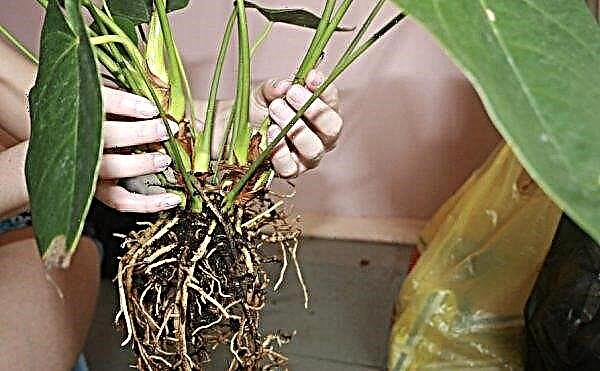Growing tomatoes is most often a rather time-consuming process that requires a lot of attention. Monitoring the nutritional composition of the soil, preparing seeds, growing seedlings, fertilizing, pinching, cultivating the soil - all these steps must be carried out correctly. And then the crop will surely please with its quality and volume. Experienced growers have a number of unusual ways to improve all of these indicators. The use of iodine and boric acid is one of these secrets.
The effect of iodine and boric acid on plants
Iodine and boric acid are trace elements that plants do not need in significant quantities. But even this small norm is sometimes vital for them. And if you take into account that these elements are practically not present in finished mineral fertilizing, and they do not get to plants separately under natural conditions, then the need for additional treatment of tomato bushes with iodine and boric acid becomes relevant wherever they grow - in a greenhouse or outdoors space. It is difficult to overestimate their role for tomatoes. But many are interested in whether it is possible to process tomatoes with these substances and how to do it correctly.
Pros
- Proper treatment of tomatoes with iodine and boron mixtures positively affects plants:
- the nitrogen exchange improves, which makes it permissible not to use nitrogen supplements, for example, saltpeter;
- fruiting becomes more abundant, yields increase;
- the protective properties of plants against harmful microorganisms are strengthened, the incidence of tomatoes is reduced;
- especially effective in the prevention of late blight;
- the development and growth of plants and fruits, their appearance are noticeably improved, the formation of ovaries is more productive.
Minuses
- If you use these substances thoughtlessly and incorrectly, you can get the opposite negative result, which not only does not eliminate the problems of tomatoes, but also exacerbates them:
- an overdose of these trace elements makes them a real poisonous tool that can lead to burns of plants;
- leaves turn yellow, curl along the edges, bend, undergo drying, dying off and falling off;
- the plant may die.
Signs of iodine deficiency
The lack of iodine in tomatoes adversely affects them and becomes noticeable even for beginner gardeners:
- there is a decrease in the immune forces of plants, as a result of which fungal and viral diseases appear in them;
- seedlings grow thin and weak;
- fruiting worsens;
- often the development of the ovaries does not occur or they generally cease to form, although the bush may look quite healthy;
- the bushes cease to grow and develop, their tops dry out, while the side shoots continue their active growth;
- dead sheets are noticeable on the sheets.

Basic feeding rules
Before you start using iodine and boron mixtures for processing tomatoes, you need to familiarize yourself with several basic rules for their use in order to avoid harmful effects on plants:
- it is necessary not to exceed the concentration norms of elements;
- overspending of the solution should be avoided when feeding plants.
Important! Signs of iodine and boron deficiency in tomatoes are similar to those associated with excess or burns resulting from exposure to the sun or chemicals. Therefore, it is necessary to precisely determine the cause from the very beginning, and only after that take appropriate measures.
Processing time
Fertilizing tomatoes with iodine solution by watering is carried out three times:
- when planting seedlings;
- during flowering;
- when fruits appear.

And by spraying method - in case of problem situations:
- fight against late blight;
- for the productive formation of brushes;
- accelerate the ripening process.
Boric acid is mainly used to treat seedlings of tomatoes or seeds before planting in the soil. By spraying a solution of boric acid to improve the immunity of tomatoes and prevent the occurrence of diseases, it is permissible to use no more than three times per season. It is used in the same cases as iodine top dressing by irrigation. It is recommended to feed the plants with iodine and boron mixtures in the cloudy season or in the evening, if necessary, treatment in the heat - the bushes must first be watered.
Important! Tomatoes are one of the few plants that especially require feeding with iodine and boron.
How to prepare a solution
For a solution of boric acid, hot water with a temperature of approximately +50 ° C must first be used for dilution, but in no case should it be cold or slightly warm, otherwise the boron will not dissolve completely. Later, the resulting mixture is diluted to the desired volume with cooler water. When iodine is added to the treatment solution for the first and second time, the water should be warm; when feeding the third time during fruiting, iodine must be added to hot water.
Later, the resulting mixture is diluted to the desired volume with cooler water. When iodine is added to the treatment solution for the first and second time, the water should be warm; when feeding the third time during fruiting, iodine must be added to hot water.
Important! The finished solution must have a temperature not lower than air temperature, otherwise the active components will undergo evaporation and a positive result cannot be achieved.
Proportions
The first iodine solution recharge (after several leaves appear on the seedlings) is prepared from:
- 3 liters of warm water;
- 1 drop of iodine (no longer needed).
The second (when ovaries appear) - from:
- 3 liters of warm water;
- 3 drops of iodine;
- 5 drops of boric acid.
- 5 l of boiled water;
- 3 kg of wood ash;
- 10 ml of iodine;
- 10 ml of boric acid, followed by dilution of the mixture in water in a ratio of 1:10.
Video: fertilizing for tomatoes with iodine, ash and boric acid
For fertilizing tomatoes with iodine solution, there are other folk recipes. According to one of them, dressing is prepared from 1 liter of water, 200 ml of milk and 5 drops of iodine.
To prepare a solution based on boric acid in order to pre-treat seedlings or seeds before planting in the soil, you need to take:
- 1 liter of hot water;
- 0.2 ml of boric acid.
Did you know? Japan and Chile own almost all the proven reserves of iodine in the world, only 1% of this substance is explored in other countries.
Step cooking
To prepare the first top dressing for seedlings based on iodine, you must:
- warm the water to a warm temperature;
- add iodine.
To prepare the first feed for seedlings and seeds based on boric acid, you need:
- heat the water to a hot state (temperature approximately +50 ° C);
- add boric acid.
Video: preparation of a solution based on boric acid
To get the second top dressing you need:
- warm part of the water to a hot temperature;
- add boric acid;
- stir the resulting mixture with the rest of the water so that it becomes warm;
- dilute iodine.
The third treatment is prepared as follows:
- boil water;
- add wood ash and boil;
- cool to an approximate temperature of +50 ° C;
- dilute the resulting mixture with warm water;
- add iodine.
Did you know? Only 3 g of iodine can kill a person.
Treatment of tomatoes with boric acid and iodine
According to the technological specifics, the processing of tomatoes with solutions of iodine and boric acid is carried out in two main ways: root and foliar top dressing. Their correct alternation improves the expected result. Also in the form of spraying, it is possible to feed the seeds even before they are sown in the soil.
Root
This method of top dressing, as the root, is performed by irrigation directly into the root zone. The solution immediately after preparation is poured under the root of each plant. This method is primarily recommended for replenishment with iodine solution. Root treatment with boric acid solution is infrequent. After the treatment is carried out correctly, you can count on improving the condition of plants, increasing yields, an influx of forces to combat pests and diseases.
Foliar
Foliar processing of tomatoes is carried out by spraying plants. The prepared solution also needs to be applied immediately. It is recommended that foliar replenishment be carried out with a spray gun configured for fine dispersion and fog. Each area of the plant should be sprayed with a mixture, this especially applies to spraying with a solution of boric acid. A solution of iodine is sprayed on the ground part of the tomatoes less often, in case of a visible threat to the plants, but before starting this treatment, the stalks and leaves of tomatoes should be watered.
Seed spraying
Helps tomatoes in the future to avoid health problems by treating the seeds even before sowing them for seedlings. Usually, a solution of boric acid is used for this. Seeds are subject to plentiful spraying or soaking for a period of up to two days. Also, before planting in permanent soil, you can spray the seedlings or soak it in a solution of boric acid no longer than a day.
Important! It is possible to cultivate the soil no more than once every 3 years.
Additional tips
Additional information does not hinder for more effective use of boric acid and iodine solutions:
- when using a solution of boric acid, all parts of tomatoes should be uniformly sprayed, since boron is weakly mobile and acts only where it was introduced;
- boric acid solution should not be added to alkaline soil, where boron will not be able to enter the plants;
- if necessary, you can treat the soil with a solution of iodine and boric acid to plant tomatoes in it for the next season, it is better to do this when digging the ground in the fall after harvesting.

Work Precautions
As with any other treatment, when feeding tomatoes with iodine and boric acid solutions, you need to be careful and take some precautions so as not to harm either the plants or yourself:
- radical feeding with boric acid is extremely rare, so as not to burn the root system;
- it is recommended that iodine solution be treated with basal nourishment, so as not to cause leaf burns and not provoke the death of the bush;
- if you still need to treat the leaves with a solution of iodine, then they must first be watered;
- alcohol-based boric acid solution is not used for plant nutrition, as it is able to burn leaves;
- for self-protection use safety glasses.
It's no secret that tomatoes require systematic supportive processing. And if it can be carried out using very inexpensive and affordable means - iodine and boric acid and get a result no worse than using special expensive chemicals, then any vegetable grower will use them. The main thing in this matter is to first familiarize yourself with the features of the use of such useful substances.












